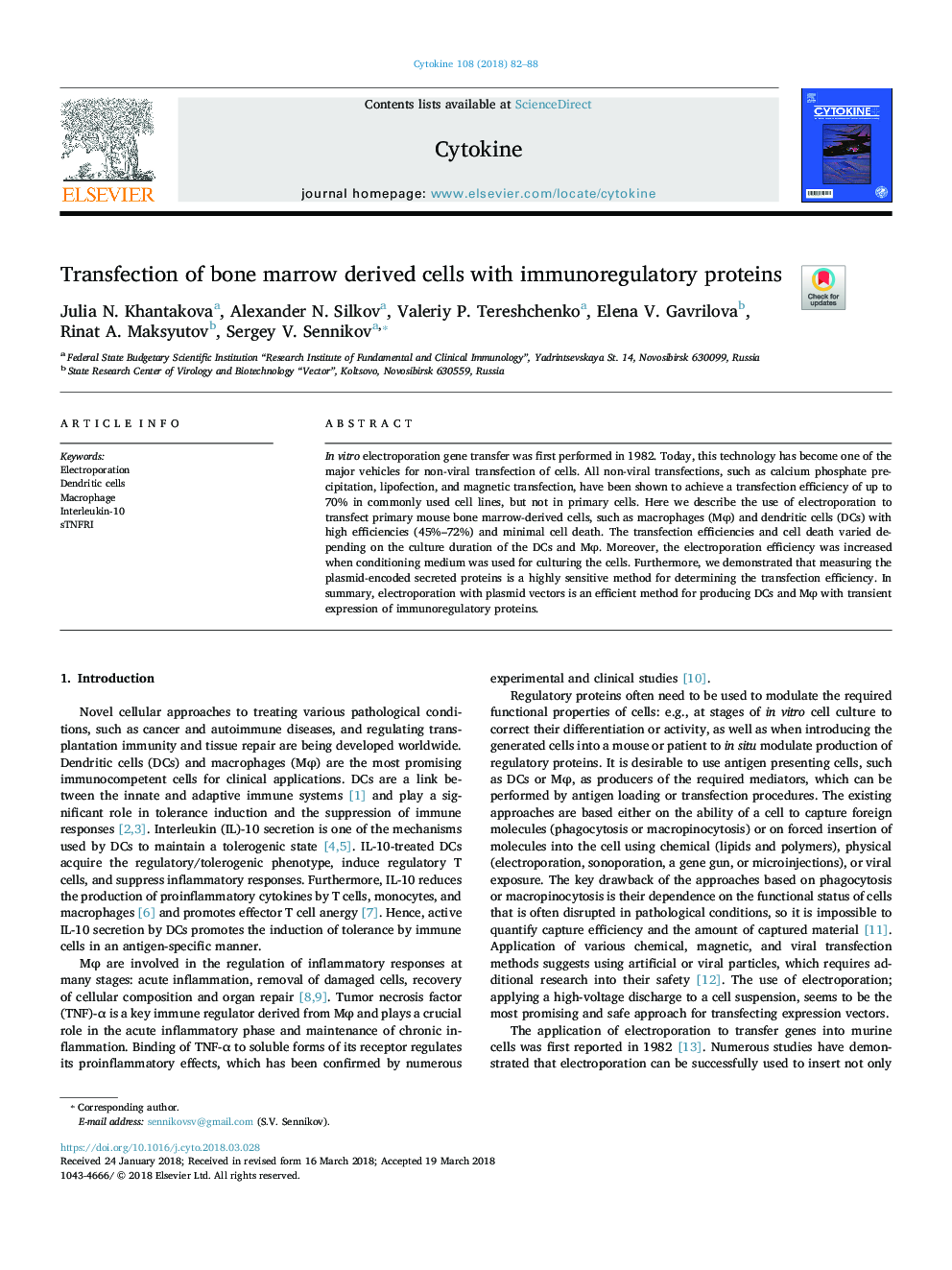| Article ID | Journal | Published Year | Pages | File Type |
|---|---|---|---|---|
| 8628804 | Cytokine | 2018 | 7 Pages |
Abstract
In vitro electroporation gene transfer was first performed in 1982. Today, this technology has become one of the major vehicles for non-viral transfection of cells. All non-viral transfections, such as calcium phosphate precipitation, lipofection, and magnetic transfection, have been shown to achieve a transfection efficiency of up to 70% in commonly used cell lines, but not in primary cells. Here we describe the use of electroporation to transfect primary mouse bone marrow-derived cells, such as macrophages (MÏ) and dendritic cells (DCs) with high efficiencies (45%-72%) and minimal cell death. The transfection efficiencies and cell death varied depending on the culture duration of the DCs and MÏ. Moreover, the electroporation efficiency was increased when conditioning medium was used for culturing the cells. Furthermore, we demonstrated that measuring the plasmid-encoded secreted proteins is a highly sensitive method for determining the transfection efficiency. In summary, electroporation with plasmid vectors is an efficient method for producing DCs and MÏ with transient expression of immunoregulatory proteins.
Related Topics
Life Sciences
Biochemistry, Genetics and Molecular Biology
Endocrinology
Authors
Julia N. Khantakova, Alexander N. Silkov, Valeriy P. Tereshchenko, Elena V. Gavrilova, Rinat A. Maksyutov, Sergey V. Sennikov,
